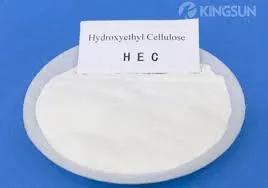
Dec . 31, 2024 19:11 Back to list
HPMC Hydroxypropyl Methyl Cellulose Suppliers for Diverse Industrial Applications
HPMC The Versatile Hydroxypropyl Methyl Cellulose
Hydroxypropyl Methyl Cellulose (HPMC) is a cellulose derivative that serves as a highly functional ingredient in various industries, particularly in pharmaceuticals, food products, and construction. Its unique properties, such as water solubility, thickening ability, and binding features, have made it a preferred choice for manufacturers worldwide. In this article, we will explore the characteristics and applications of HPMC, as well as its importance as a manufactured product.
HPMC is produced through the chemical modification of cellulose, a natural polymer derived from plant cell walls. The hydroxypropyl and methyl groups are introduced to enhance its solubility in cold or hot water, turning it into a gel-like substance. The degree of substitution and molecular weight can be adjusted during manufacturing, providing manufacturers with customized HPMC grades that meet specific requirements for a variety of applications.
One of the primary industries utilizing HPMC is pharmaceuticals. HPMC is commonly used as a binder and excipient in tablet formulations, where it provides excellent binding properties while being non-toxic and inert. Its gel-forming capability aids in the controlled release of active ingredients, making it ideal for sustained-release formulations. Additionally, HPMC's viscosity properties make it suitable for use in suspensions and emulsions, helping to stabilize these formulations.
hpmc-hydroxypropyl methyl cellulose manufacturer

In the food industry, HPMC acts as a thickener, emulsifier, and stabilizer. It is widely used in gluten-free products, where it enhances texture and improves mouthfeel. It can also be found in sauces, dressings, and baked goods, where it contributes to moisture retention and extends shelf life. As consumers increasingly demand healthier and gluten-free options, HPMC has become an essential ingredient that caters to these needs without compromising on food quality.
Another significant application of HPMC is in the construction sector. It is utilized in mortar and plaster formulations, where it enhances viscosity and improves adhesion to substrates. HPMC allows for better workability, which is vital for construction projects. It slows the drying process, providing workers with extra time to apply and shape materials. Moreover, it contributes to the durability of the final construction product, ensuring longevity and performance.
As a manufacturer of HPMC, it is crucial to maintain high-quality standards throughout the production process. This includes sourcing high-purity cellulose, carrying out thorough quality control tests, and adhering to industry regulations. Environmental sustainability is also becoming increasingly important. Many manufacturers are exploring eco-friendly practices, such as sourcing renewable raw materials and reducing energy consumption during production.
In summary, Hydroxypropyl Methyl Cellulose (HPMC) is a multifunctional polymer with a wide range of applications in pharmaceuticals, food production, and construction. Its unique properties allow manufacturers to create high-quality products that meet specific consumer demands. As the market shifts towards more sustainable and health-conscious options, the demand for HPMC is expected to grow. Manufacturers must prioritize quality and sustainability to thrive in this evolution of consumer preferences. As such, HPMC remains a significant player in the chemical industry, contributing to various sectors while adapting to the ever-changing landscape of consumer needs.
-
Versatile Hpmc Uses in Different Industries
NewsJun.19,2025
-
Redispersible Powder's Role in Enhancing Durability of Construction Products
NewsJun.19,2025
-
Hydroxyethyl Cellulose Applications Driving Green Industrial Processes
NewsJun.19,2025
-
Exploring Different Redispersible Polymer Powder
NewsJun.19,2025
-
Choosing the Right Mortar Bonding Agent
NewsJun.19,2025
-
Applications and Significance of China Hpmc in Modern Industries
NewsJun.19,2025







